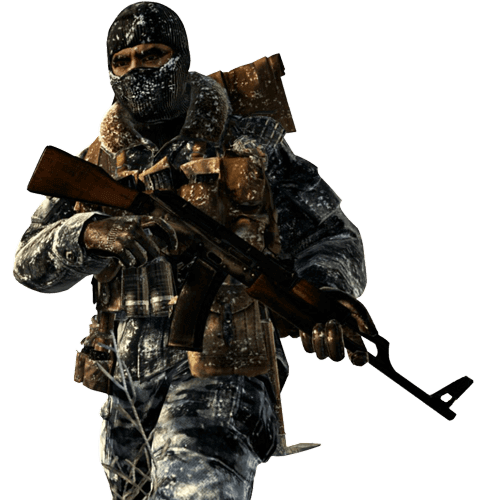
Story by Dave Cook
Fri, Aug 30, 2013 | 08:55 BST
The Elder Scrolls Online is an MMO extension of Skyrim’s first-person template. VG247′s Dave Cook goes hands-on and speaks with Zenimax Online Studios general manger Matt Firor to find out more.

[h=3]The Elder Scrolls Online[/h]

Developed by Zenimax Online Studios, The Elder Scrolls Online is an MMO heading to PC, PS4 and Xbox One in 2014.
The game is monetised by monthly subscriptions currently priced at $14.99/€12.99/£8.99.
It will also feature microtransactions for in-game items and discounts for those buying game time in batches.
Bethesda is currently pushing Microsoft to allow Xbox One owners to play The Elder Scrolls Online without an Xbox Live Gold subscription.
There seems to be a bubbling concern that The Elder Scrolls Online knifes its parent series in the back and abandons the key elements that made it such a runaway success. I’ve seen a wide range of complaints from gamers so far that cover everything from ‘the palette is too bright’ to ‘I just want Skyrim with co-op’.
It’ll never please everyone, but after spending an hour with the MMO at gamescom last week I came away feeling that The Elder Scrolls Online is a true extension of Skyrim’s template, and in turn it feels more like a core entry to the series with embedded multiplayer, rather than a complete rework from the ground up.
So if you feared that this game might have become World of Warcraft in Nord’s clothing then worry not, it’s very much an Elder Scrolls experience and a vast one at that. My concern then, is that the game isn’t different enough to warrant the recently-confirmed monthly subscription fee, but that’s for the paying individual to decide. I’ll return to that issue later on in this piece.
Regardless, this is a big undertaking for both all concerned, as Zenimax Online Studios general manager Matt Firor explained, “Zenimax Media hired me to start Zenimax Online, make the studio, work with Bethesda Game Studios and it was all centred around the idea of making an Elder Scrolls MMO.
“The early days were all about setting, how the PVP system’s going to be integrated into it, how do the factions work and a lot of technology stuff too. In terms of the idea a lot of the early days were figuring out how the game worked in the timeline of the world.”
It’s set around 1,000 years before the events of Skyrim so given the density of The Elder Scrolls lore out there right now, Firor and his team had to regularly consult Bethesda to make sure all the strands fit. He added, “We had to go through all the books from the other games and take out all the new ones, the ones that were less than a thousand years old because they were obviously anachronistic.
“Then we had a lot of fun writing a lot of new books, a lot of them pre-staging things that the players already know happened because they’ve played the other games, and we got to talk about things that will happen later and things like that. It was a lot of fun.”
It’s important to stress that the team doesn’t view this game as a mere cash-grab, MMO hatchet job, but that it’s a large project designed by and for fans with the series legacy and lore firmly in mind. If the studio can’t keep in-line with the expectations of veteran players, then the whole thing breaks apart. It’s lucky, then, that my hands-on session confirmed the game’s quality.

The section I played was set on Bleakrock Isle, which is part of Skyrim itself. Aesthetically, it’s similar to Bethesda’s last outing with snow-capped mountains, ancient ruins, meandering wildlife and delicate orchestral strings fluttering on the icy breeze. The HUD and controls are also near-identical to the core series, which basically allowed me to start hoovering up quests without first needing a tutorial. It’s familiar, yet the sheer scale of the world is inviting at the same time.
While I was assigned to a party of four, there was no obligation in this early area to group-up and tackle chores as a unit. I ignored them and went on my merry way to Skyshroud Barrow in search of the undead lurking there, and to rescue a scout named Darj. Battling skeletons came naturally, with left mouse for attack, right for block and everything else just where it was when I last played Skyrim.
“It’s mostly, you realise that the multiplayer thing is kind of intertwined into the Elder Scrolls game, not in your face. So you could play the first many, many hours and never access any multiplayer feature at all if you wanted. That was one of our goals; that you should be able to play solo.”
The key difference, however, is in the way enemy attacks are sign-posted. It’s a simple touch, but some enemy attacks are flagged up by a visual effect that signifies a stun chance. Block the incoming blow and your attacker is frozen to the spot in a daze, allowing for brutal follow-up strikes. Enemy attacks with any sort of area-of-effect are also painted in red on the environment, so it’ll always be clear how to dodge incoming arrows and other moves.
Defeating enemies rewards players with experience, and the old ‘learn by doing’ format of attribute levelling has returned – your one-handed proficiency will raise as you dish out more one-handed damage, absorbing attacks will progress your armour stat and so on. The same goes for new abilities mapped to your skill-bar, which improve as they are used.
It’s a tried and tested mechanic, so I’m glad Zenimax Online hasn’t mucked about with it too much. That said, I did feel that trudging across snowy fields in search of runes and captive NPCs felt a tad over-familiar, because in all honesty I’d done most of these things in the past year and half while playing Skyrim. That’s brilliant if you want more of the same experience, but I felt a little bored during some of the more basic side-quests.
When it came to online features I found myself being hammered by some tougher, named creatures but luckily other players came to my aid and helped me take them down. The neat thing here is that you all get the same loot and spoils for your trouble, so it definitely pays to be nice. Once that was done however, I went back to solo play for the rest of my session.
After my hands-on, I asked Firor if he and his team were aware of the the danger that The Elder Scrolls Online could end up being a subscription-based Skyrim with optional co-op. He replied, “I get that question asked a lot and the simple answer is, ‘hey it’s an Elder Scrolls MMO’. The more deep answer is, you can’t just say ‘Elder Scrolls MMO’, you actually have to do it, put in the features that make it, and I think that’s really what we’re bringing to the table.
“You sit down and play it for two hours or an hour and it’s like, ‘hey this is an Elder Scrolls game’. But then you start to realise, ‘hey there’s other people here’, and then you see a friend system, and then you see a group system, you see a guild system, but it’s not like right in your face. The UI is not screaming at you, there’s not 40 toolbars and things flashing.

“It’s mostly, you realise that the multiplayer thing is kind of intertwined into the Elder Scrolls game, not in your face. So you could play the first many, many hours and never access any multiplayer feature at all if you wanted. That was one of our goals; that you should be able to play solo.”
Firor confirmed that players would be able to experience what he called “The Elder Scrolls parts of the game” completely solo, and that includes levelling, exploring, going through your alliance’s main story and more. He added, “There are parts in the upper-reaches of the game like the PvP system where yes, technically you can solo but you’re going to want to. We’re going to have some higher-level PvE stuff we’re working on now that is much more group orientated. No one’s going to force you to group when you’re just doing normal Elder Scrolls things like playing the core quest-line and exploring the world.”
On top of this, there are public dungeons that can be tackled solo – although chances are you’ll be ganked on sight – and high-level areas that really do demand a group effort if you want to survive. Like Bungie’s approach with Destiny, it’s somewhat refreshing to see multiplayer and online participation offered as an option, rather than a mandatory style of play. However, this is a paid-MMO we’re talking about here, so it seems a little off that players will be expected to pay monthly for what is essentially a solo campaign with optional co-op.
Either way, Firor confirmed that his team is playing a long-term strategy with The Elder Scrolls Online, and that there is a five-year roadmap currently in the works that will see new content added to the mix regularly.
It’s impossible to ascertain an MMO’s true value based on a single half-hour play session so please do bear that in mind, but if both Bethesda and Zenimax Online Studios want this game to survive for years in the heated MMO space, they need to deliver a solid prospect worthy of monthly fees, as well as a compelling online content stream to keep people coming back.
It’s a tall order, and right now the MMO-noob in me is pleased that there are options for solo players. I’m simultaneously concerned that people won’t want to pay regularly for something that doesn’t go ‘all-in’ on the true MMO front. This all depends on what you want from the experience; Do you want the biggest Elder Scrolls solo campaign in existence with co-op, or would you prefer a fleshed out MMO experience through-and-through?
Let us know what you think below.
More...








